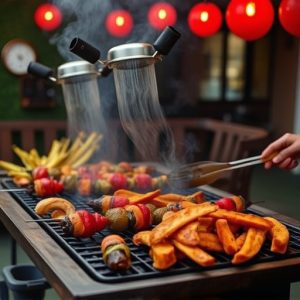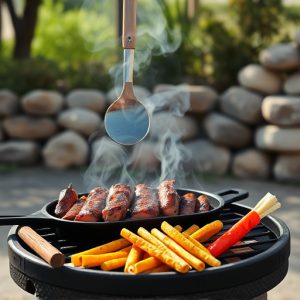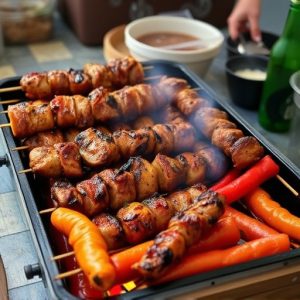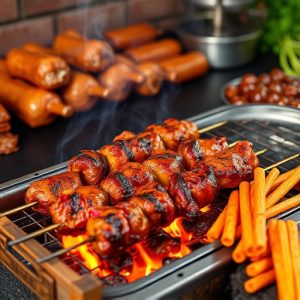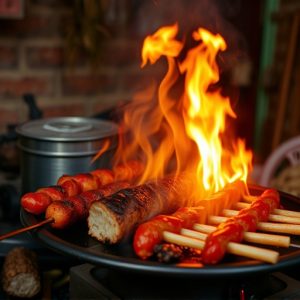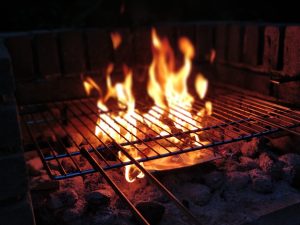Mastering BBQ Spare Ribs: From Selection to Savory Brine
Choosing the perfect BBQ spare ribs involves selecting meaty cuts with rich marbling and a thick layer of fat for optimal tenderness. Baby back and St. Louis-style (spare ribs) are primary options, offering distinct flavors and cooking styles. Brining is essential for tenderization and flavor enhanc…….

Choosing the perfect BBQ spare ribs involves selecting meaty cuts with rich marbling and a thick layer of fat for optimal tenderness. Baby back and St. Louis-style (spare ribs) are primary options, offering distinct flavors and cooking styles. Brining is essential for tenderization and flavor enhancement; soak ribs in a solution of water, salt, sugar, and spices for 2-4 hours or overnight before grilling. This process ensures juicy, flavorful ribs that pair well with BBQ sauces.
Unleash the ultimate BBQ experience with mouthwatering, finger-licking good ribs! This comprehensive guide takes you on a journey from choosing the perfect cut of ribs—whether it’s tender baby back or meaty spare ribs—to mastering the art of brining for maximum flavor. Learn to craft a rich sauce that balances sweetness, acidity, and smokiness, then discover the secret to slow-cooking them till they’re fall-off-the-bone tender. Finally, explore glazing techniques to achieve a crispy finish and serving suggestions to impress your guests with this delectable BBQ spare ribs recipe.
- Choosing the Right Ribs: Quality Matters
- – Types of ribs: baby back vs. spare ribs
- – Selecting the perfect cut for your recipe
- Preparation Techniques: Brining for Flavor
- – Importance of brining and its benefits
- – Step-by-step guide to brining spare ribs
Choosing the Right Ribs: Quality Matters
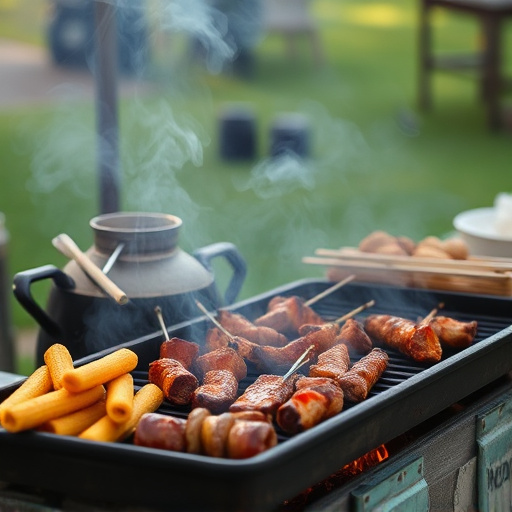
Choosing the right ribs is half the battle in creating finger-licking good BBQ spare ribs recipes. Opt for meaty, well-marbled cuts with a good layer of fat to ensure they stay juicy and tender during the slow-cooking process. Quality ribs should have a deep, rich color, indicating a robust flavor profile. Look for ribs that are free from any bones or membranes, as these can be tough and unappealing. A good BBQ spare ribs recipe starts with fresh, high-quality ingredients, setting the stage for a mouthwatering culinary experience.
When selecting your meat, consider the different cuts available—baby back, spareribs, or St. Louis-style—each offering unique characteristics that will influence the final sauce and cooking method. The right choice will ensure your ribs melt in your mouth, providing an unforgettable sensory delight for any BBQ enthusiast.
– Types of ribs: baby back vs. spare ribs
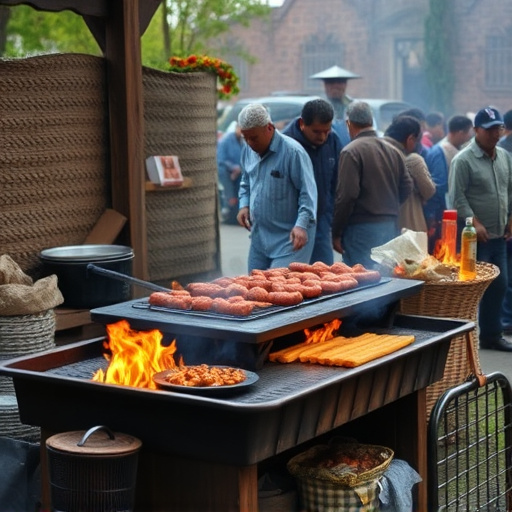
When it comes to BBQ ribs, two main types dominate the culinary scene: baby back and spare ribs. Each has its unique characteristics that cater to different tastes and cooking styles. Baby back ribs, as the name suggests, come from the smaller end of the pig’s ribcage, just behind the loin muscle. They are known for their tender texture and rich marbling, making them incredibly juicy when cooked properly. This cut is often favored for its delicate flavor, allowing the sauce to shine through.
On the other hand, spare ribs, or St. Louis-style ribs, are larger and come from the belly section of the pig. They have a distinctive meaty texture with significant marbling and fat, making them incredibly flavorful and juicy. Spare ribs require a bit more time to cook to ensure the meat tenderizes fully, but they are worth it for their robust taste. A classic BBQ spare ribs recipe involves slow-smoking the ribs over hardwood coals, followed by a generous slathering of BBQ sauce for that finger-licking goodness.
– Selecting the perfect cut for your recipe
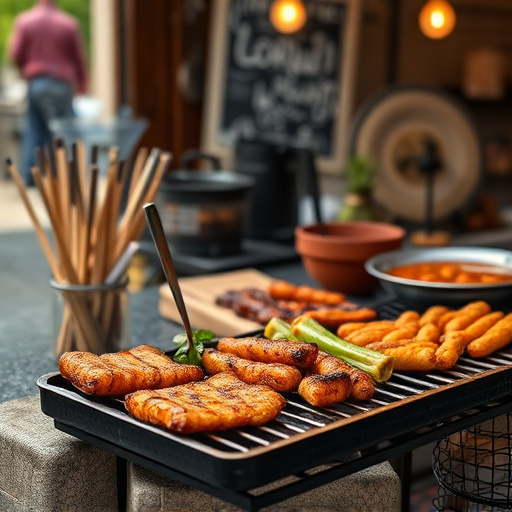
When it comes to crafting a mouthwatering BBQ spare ribs recipe, choosing the right cut is half the battle won. Look for meaty, well-marbled ribs with visible bones—this ensures a tender and juicy end product. The most popular cuts are baby back or spareribs; both offer an excellent balance of meat and bone. Baby back ribs are smaller, making them ideal for individual portions, while spareribs provide a more substantial serving, perfect for feeding a crowd.
For a truly exceptional BBQ spare ribs recipe, consider the quality of your ingredients. Opt for meaty cuts from reputable butchers or choose premium store-bought options. The right cut will ensure your ribs cook evenly, resulting in tender meat that practically falls off the bone, drenched in a rich, flavorful sauce.
Preparation Techniques: Brining for Flavor
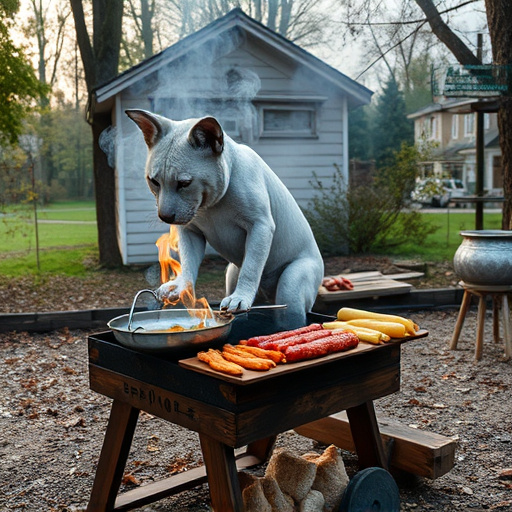
When preparing BBQ spare ribs, brining is a preparation technique that cannot be overlooked. Brine acts as a flavor enhancer, adding depth and richness to your ribs before they even hit the grill. It helps to break down tough connective tissues, making the ribs tender and succulent. For best results in your bbq spare ribs recipe, mix together a solution of water, salt, sugar, and spices like peppercorns, garlic powder, and paprika. Submerge your ribs completely in this brine for 2-4 hours (or even overnight) in the refrigerator before grilling.
This simple step will transform your ribs into finger licking good treats with a rich, savory sauce. The brine penetrates deep into the meat, ensuring every bite is packed with flavor. After brining, pat the ribs dry and proceed with your preferred BBQ sauce or cooking method for a mouthwatering bbq spare ribs recipe that’s sure to impress folks at any gathering.
– Importance of brining and its benefits
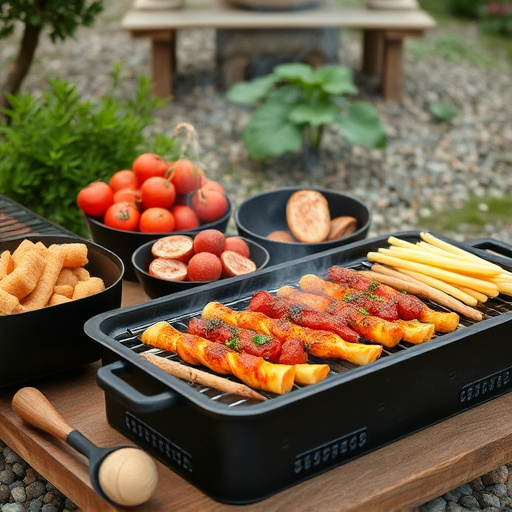
Brining is a crucial step in achieving finger-licking good BBQ spare ribs, often considered the secret ingredient for tender and flavorful meat. It involves soaking the ribs in a solution of salt, spices, and other aromatics, which helps to break down muscle fibers and enhance the overall taste profile. This process, when combined with slow cooking, ensures that the ribs become incredibly tender, almost falling off the bone.
For BBQ spare ribs recipes, brining can transform tough cuts of meat into juicy, succulent treats. The salt in the brine not only seasons the ribs but also draws out moisture, preventing the meat from drying out during the cooking process. This is particularly beneficial for rib lovers who prefer their meat tender and saucy, as it allows the rich BBQ sauce to adhere better, creating a mouthwatering experience with each bite.
– Step-by-step guide to brining spare ribs
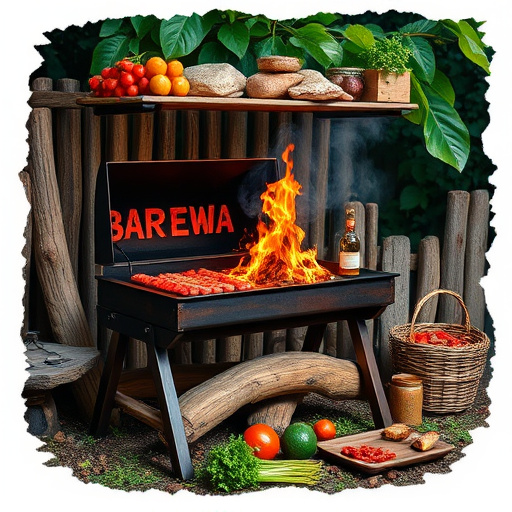
To achieve mouthwatering, tender BBQ spare ribs with a rich sauce, brining is an essential step that enhances flavor and ensures perfect texture. Here’s a straightforward guide to get you started:
1. Prepare the Brine: Mix 2 cups of warm water with 1 cup of coarse salt, stirring until fully dissolved. Add 1/4 cup of brown sugar, 2 tablespoons of your favorite BBQ spice blend, and a couple of garlic cloves (crushed). Let it cool to room temperature.
2. Submerge the Ribs: Place your spare ribs in a large zip-top bag or a container. Pour the brine over them, ensuring every piece is fully covered. Seal the bag tightly and refrigerate for 2-3 days. Turn the bag over occasionally to ensure even brining.
3. Rinse and Dry: After brining, remove the ribs from the solution, rinse them under cold water, and pat dry with paper towels. This step is crucial as it removes excess salt.
4. Smoke or Grill: Preheat your smoker or grill to a low temperature (around 225°F/107°C). Add your ribs, smoke for approximately 3 hours, then paint on your favorite BBQ sauce. Continue cooking until the ribs are tender and the sauce caramelizes, about another hour.
